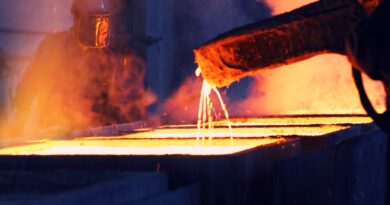Bright future for bauxite industry in Guinea
The bauxite mining industry is booming in Guinea on the back of demand of Chinese, Russian, Gulf and Indian alumina refineries. The bauxite export from Guinea may exceed to over 110 million tons in 2021.
Guinea bauxite is the most preferred ore for alumina refineries worldwide thanks to its low reactive silica content and high gibbsitic alumina. Lateritic bauxite occurs in a series of low-level plateaus separated by valleys. Bauxite is easy to mine by drilling-blasting or surface miner and there is about 1 to 2m soil + overburden and in average bauxite ore zone, the thickness is 8m in Boke area. Bauxite is exported as direct shipping ore by simple crushing with or without drying to reduce the moisture content. Recently AGB2A company has started beneficiating their bauxite by dry crushing and screening process and producing one of the best quality metallurgical grade bauxite.
Along with bauxite export, infrastructure for export in the country is also developing at a fast pace. At present, there are 7 large bauxite mining and export operations in Guinea– First 3 at Kamsar port (CBG, GAC/EGA and RUSAL-Dian Dian), one in Conakry (CBK), one from BelAir (Alufer) and 2 from river Nunez (Katougouma and Dapilon). SMB-WAP, JV of Chinese alumina refinery and Singapore Winning Group, is exporting more than 35 million tonnes of bauxite per annum from their river jetties.
With the construction of 3 more river jetties on river Guemeyire (Fatala) in Guinea’s Boffa Prefecture namely by CHALCO, Kimbo and Kokaya (AGB2A), the bauxite export has further increased during this year. CHALCO has already started bauxite export from their river jetty of Boffa Prefecture. Ashapura, an Indian company has taken over Konta river jetty near Kindia and started iron ore shipment and now planning to export bauxite.
The booming bauxite mining industry and export from Guinea may change the International bauxite market as lower grade bauxite of India, Indonesia and Australia may face new challenges. China’s declining domestic bauxite output due to inferior quality and high cost of mining continues to accelerate bauxite imports. In 2019, China imported about 100 million tons of bauxite mainly from Guinea, Australia and Indonesia. At presently imported bauxite in China is cheaper than domestic ore and many high-temperature alumina refineries are converting into low temperature mainly based on Guinea bauxite.
This is an appropriate time for Guinea to set up alumina plant and export value-added product in place of raw bauxite. About 8 bauxite mining companies have put forward their plans, however, alumina projects are yet to be materialized.
For sustainable development of bauxite mining, export and alumina refinery, it is necessary to set up Bauxite-Alumina Institute in the country to facilitate all the R&D work including bauxite characterisation, resource-reserve estimation, mine planning and work on the process technology for alumina production.




